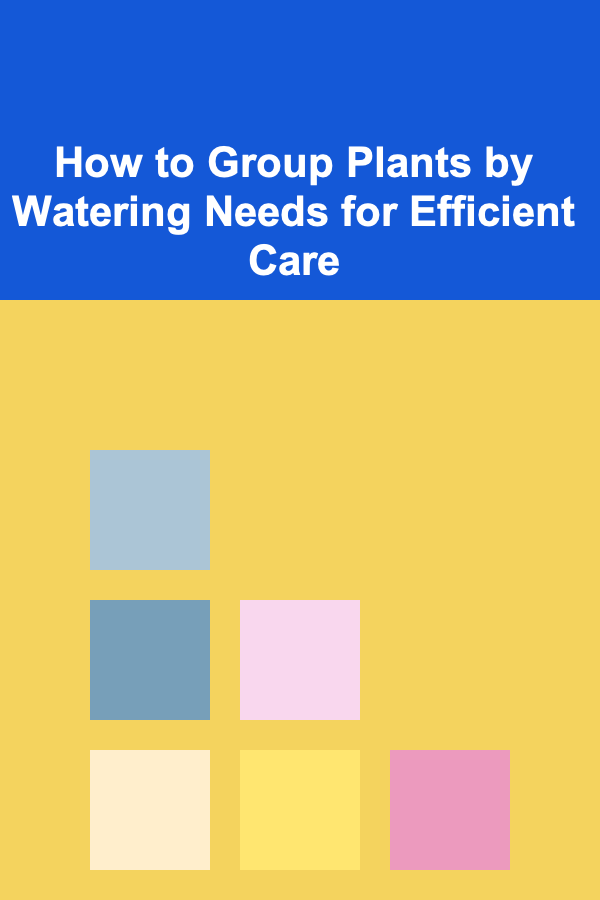
Finding Clarity Through Stillness
ebook include PDF & Audio bundle (Micro Guide)
$12.99$5.99
Limited Time Offer! Order within the next:

In a world saturated with constant stimulation, relentless demands, and an overwhelming influx of information, the pursuit of clarity often feels like an elusive dream. We are bombarded with notifications, deadlines, and societal pressures that leave us feeling scattered, unfocused, and disconnected from our inner selves. The relentless pace of modern life encourages a perpetual state of 'doing,' leaving little room for 'being.' This constant activity, while often perceived as productive, can ironically lead to a significant decrease in true effectiveness and a profound sense of disorientation. The noise of the external world drowns out the subtle whispers of our intuition, obscuring our true desires and hindering our ability to make meaningful choices.
However, amidst this chaos lies a powerful antidote: stillness. Stillness is not merely the absence of physical movement; it is a state of deep inner calm, a quiet sanctuary where the mind can settle, and the heart can open. It's a deliberate act of disconnecting from the external world to reconnect with the internal landscape of our thoughts, feelings, and sensations. By intentionally creating moments of stillness, we can cultivate a space for clarity to emerge, allowing us to see ourselves and the world around us with greater understanding and perspective. This essay explores the profound benefits of stillness, delving into the practical techniques for cultivating it in our daily lives and examining its transformative power in fostering self-awareness, reducing stress, and ultimately, leading a more purposeful and fulfilling life.
The Perils of Constant Activity
Before exploring the virtues of stillness, it's crucial to understand the detrimental effects of constant activity. Our brains are not designed to process the sheer volume of information we encounter daily. The constant influx of data overloads our neural pathways, leading to a state of cognitive fatigue. This fatigue manifests in several ways, including:
- Decreased Focus and Concentration: The ability to concentrate on a single task diminishes as our attention is constantly fragmented by distractions. We become prone to multitasking, which has been shown to reduce productivity and increase errors.
- Increased Stress and Anxiety: The pressure to keep up with demands and expectations creates a chronic state of stress. Our bodies remain in a state of "fight or flight," releasing stress hormones that can negatively impact our physical and mental health over time.
- Impaired Decision-Making: When our minds are cluttered and overwhelmed, we struggle to make clear and rational decisions. We may react impulsively or make choices based on fear rather than reason.
- Reduced Creativity and Innovation: Creative thinking requires a certain level of mental spaciousness. Constant activity leaves little room for the mind to wander, explore new ideas, and make unexpected connections.
- Loss of Connection to Self: The relentless focus on external demands can lead to a disconnection from our inner selves. We lose touch with our values, passions, and the things that truly bring us joy and meaning.
In essence, constant activity creates a vicious cycle. We become more stressed and less effective, leading to even greater demands and pressure. This cycle can leave us feeling trapped, exhausted, and utterly lost. The key to breaking free from this cycle lies in recognizing the importance of stillness as a necessary counterbalance to the relentless pace of modern life.
Understanding Stillness: More Than Just Doing Nothing
Stillness is often misunderstood as inactivity or a lack of productivity. However, true stillness is far more than simply ceasing physical movement. It is an active practice of cultivating inner peace and presence. It involves quieting the mental chatter, releasing the grip of our thoughts, and connecting with the present moment. It is about being instead of doing.
Think of a lake. When the surface is turbulent and agitated, it's impossible to see the bottom. But when the water is still and calm, the depths become visible. Similarly, when our minds are constantly churning with thoughts and worries, we cannot clearly see our true selves or the underlying reality of our experiences. Stillness allows the mental waters to settle, revealing a clearer, more profound perspective.
Stillness encompasses several key elements:
- Mindfulness: Paying attention to the present moment without judgment. This involves observing our thoughts, feelings, and sensations as they arise, without getting caught up in them.
- Acceptance: Acknowledging and accepting our experiences as they are, without resistance or judgment. This allows us to let go of the need to control or change things, creating space for peace and equanimity.
- Non-Attachment: Detaching from our thoughts and emotions, recognizing that they are not who we are. This allows us to observe them without being overwhelmed by them.
- Presence: Fully inhabiting the present moment, without dwelling on the past or worrying about the future. This allows us to experience life more fully and appreciate the simple joys that often go unnoticed.
- Inner Silence: The quieting of the internal dialogue. It's not about stopping thoughts completely, but about creating space between them and disengaging from the constant narration of our lives.
Cultivating stillness is not about escaping reality; it is about deepening our connection to it. It is about finding peace and clarity within ourselves, so that we can navigate the challenges of life with greater resilience, wisdom, and compassion.
Practical Techniques for Cultivating Stillness
Incorporating stillness into our daily lives may seem challenging, especially in today's fast-paced world. However, with consistent effort and the right techniques, it is possible to cultivate a sense of inner peace and clarity amidst the chaos. Here are some practical approaches:
Meditation
Meditation is one of the most effective ways to cultivate stillness. It involves training the mind to focus on a single point of reference, such as the breath, a mantra, or a visual image. There are many different types of meditation, so it's important to find one that resonates with you. Here are a few common approaches:
- Mindfulness Meditation: Focus on observing your breath, sensations, thoughts, and emotions as they arise, without judgment. When your mind wanders, gently redirect your attention back to your chosen point of focus.
- Loving-Kindness Meditation: Cultivate feelings of love, compassion, and kindness towards yourself and others. Repeat phrases such as "May I be well, may I be happy, may I be peaceful." Extend these wishes to loved ones, neutral individuals, difficult people, and eventually, all beings.
- Transcendental Meditation (TM): Use a personalized mantra to quiet the mind and transcend ordinary thought. TM is typically practiced for 20 minutes twice a day.
- Walking Meditation: Focus on the sensations of your feet touching the ground as you walk. Pay attention to the rhythm of your steps and the movement of your body.
Start with short meditation sessions of 5-10 minutes and gradually increase the duration as you become more comfortable. Consistency is key. Even a few minutes of daily meditation can have a profound impact on your well-being.
Mindful Breathing Exercises
Mindful breathing is a simple yet powerful technique for cultivating stillness and reducing stress. It involves focusing your attention on your breath, noticing the sensations of each inhale and exhale. Here are a couple of simple exercises:
- Diaphragmatic Breathing (Belly Breathing): Place one hand on your chest and the other on your belly. Inhale deeply through your nose, allowing your belly to expand while keeping your chest relatively still. Exhale slowly through your mouth, drawing your belly in. Repeat for several minutes, focusing on the rise and fall of your breath.
- Box Breathing: Inhale for a count of four, hold your breath for a count of four, exhale for a count of four, and hold your breath again for a count of four. Repeat this cycle for several minutes, visualizing a square as you breathe.
You can practice mindful breathing exercises anywhere, anytime. They are particularly helpful when you feel stressed, anxious, or overwhelmed.
Nature Immersion
Spending time in nature has been shown to have a calming and restorative effect on the mind and body. The sights, sounds, and smells of nature can help to quiet the mental chatter and connect us to something larger than ourselves. Even a short walk in a park or a few minutes spent gazing at a tree can be beneficial. Consider:
- Forest Bathing (Shinrin-Yoku): Immerse yourself in the atmosphere of the forest, engaging all of your senses. Notice the colors, textures, and smells of the trees and plants. Listen to the sounds of the birds and the wind. Breathe deeply and allow yourself to relax and connect with nature.
- Nature Walks: Take regular walks in nature, paying attention to your surroundings. Observe the details of the landscape, the changing seasons, and the wildlife around you.
- Gardening: Engage in gardening activities, such as planting, weeding, and watering. The tactile experience of working with the soil can be very grounding and therapeutic.
Nature offers a natural sanctuary from the stresses of modern life. Make it a priority to spend time outdoors regularly.
Journaling
Journaling is a powerful tool for self-reflection and gaining clarity. It involves writing down your thoughts, feelings, and experiences without judgment or censorship. Journaling can help you to:
- Process Emotions: Expressing your emotions in writing can help you to release pent-up feelings and gain a better understanding of your emotional landscape.
- Identify Patterns: By reviewing your journal entries, you may notice recurring patterns in your thoughts, feelings, and behaviors. This can help you to identify areas where you may need to make changes.
- Gain Perspective: Writing about your experiences can help you to gain a broader perspective on your life and challenges.
- Clarify Goals: Journaling can help you to clarify your goals and priorities, and to develop a plan for achieving them.
There are no rules for journaling. Simply write whatever comes to mind. You can write in a notebook, on a computer, or even on your phone. The important thing is to create a regular practice that allows you to connect with your inner thoughts and feelings.
Digital Detox
Our constant connection to technology can be a major source of stress and distraction. Taking regular breaks from digital devices can help to reduce mental clutter and create space for stillness. Consider:
- Designated Tech-Free Times: Set aside specific times each day or week when you completely disconnect from technology. This could be during meals, before bed, or on weekends.
- Notification Management: Turn off unnecessary notifications on your phone and computer. This will help to reduce distractions and allow you to focus on the task at hand.
- Social Media Breaks: Take regular breaks from social media. Limit your time on these platforms and be mindful of how they make you feel.
- Digital Sabbath: Consider taking a longer break from technology, such as a weekend or even a week. This will give you a chance to fully disconnect and recharge.
Digital detoxing can be challenging, but it is essential for creating space for stillness and reconnecting with the present moment.
Mindful Movement
Engaging in mindful movement practices, such as yoga, tai chi, or qigong, can help to cultivate stillness in the body and mind. These practices involve paying attention to your breath, your body's movements, and the sensations in your muscles and joints. They can help you to:
- Release Tension: Mindful movement can help to release physical tension and stress that may be stored in your body.
- Improve Body Awareness: These practices can help you to become more aware of your body's sensations and movements, which can improve your overall well-being.
- Calm the Mind: The focus on breath and movement can help to quiet the mental chatter and bring you into the present moment.
- Increase Flexibility and Strength: Mindful movement can improve your flexibility, strength, and balance.
Find a mindful movement practice that you enjoy and incorporate it into your regular routine. Even a short session can be beneficial.
The Transformative Power of Stillness
The benefits of cultivating stillness extend far beyond simply feeling more relaxed. Regular practice can lead to profound transformations in your life, including:
Enhanced Self-Awareness
Stillness provides the space for introspection and self-discovery. By quieting the external noise and tuning into our inner world, we can gain a deeper understanding of our thoughts, feelings, motivations, and values. We become more aware of our patterns of behavior and the underlying beliefs that drive them. This self-awareness is essential for personal growth and making conscious choices that align with our true selves. We can identify limiting beliefs and begin to challenge them. We can understand our emotional triggers and develop strategies for managing our reactions. Ultimately, self-awareness empowers us to live more authentically and purposefully.
Reduced Stress and Anxiety
As previously mentioned, chronic stress and anxiety are pervasive in modern life. Stillness provides a powerful antidote to these conditions. By engaging in practices such as meditation and mindful breathing, we can activate the parasympathetic nervous system, which promotes relaxation and reduces the production of stress hormones. Stillness also helps us to develop a greater sense of perspective, allowing us to see our problems in a more balanced light. We can learn to detach from our worries and anxieties, recognizing that they are simply thoughts and feelings that come and go. This ability to detach can significantly reduce the impact of stress on our mental and physical health.
Improved Focus and Concentration
In a world of constant distractions, the ability to focus and concentrate is a valuable skill. Stillness helps to train the mind to be more present and attentive. By regularly practicing meditation, we can strengthen our ability to focus on a single point of reference and to resist the urge to wander. This improved focus translates to increased productivity, creativity, and overall effectiveness in all areas of our lives. We become better able to learn new information, solve problems, and make decisions with clarity and precision.
Enhanced Emotional Regulation
Stillness empowers us to manage our emotions more effectively. By cultivating mindfulness and acceptance, we can learn to observe our emotions without judgment or resistance. We can recognize that our emotions are not who we are, but rather temporary states that pass through us. This understanding allows us to respond to our emotions with greater awareness and compassion, rather than reacting impulsively. We can develop strategies for managing difficult emotions, such as anger, fear, and sadness, in a healthy and constructive way. This improved emotional regulation leads to more harmonious relationships, greater resilience in the face of adversity, and a deeper sense of inner peace.
Increased Creativity and Intuition
Creativity and intuition thrive in a state of stillness. When the mind is quiet and open, new ideas and insights can emerge. Stillness allows us to tap into our subconscious mind, where our deepest wisdom and creativity reside. By disconnecting from the logical, analytical part of our brain, we can access a more intuitive and imaginative way of thinking. This can lead to breakthroughs in problem-solving, innovative solutions, and a greater sense of inspiration and purpose. Stillness also allows us to connect with our inner guidance, trusting our intuition to lead us in the right direction.
Greater Compassion and Empathy
Stillness cultivates compassion and empathy towards ourselves and others. By practicing loving-kindness meditation, we can develop feelings of love, kindness, and compassion towards all beings. Stillness also helps us to understand our own suffering, which allows us to relate to the suffering of others with greater empathy. We become more aware of our interconnectedness and the shared human experience. This increased compassion leads to more meaningful relationships, a greater sense of social responsibility, and a desire to contribute to the well-being of the world.
A Deeper Sense of Purpose and Meaning
Ultimately, stillness helps us to connect with our true purpose and meaning in life. By quieting the external noise and tuning into our inner voice, we can gain clarity about our values, passions, and the things that truly matter to us. We can identify our unique gifts and talents and find ways to use them to make a positive impact on the world. Stillness allows us to live more authentically and purposefully, aligned with our deepest values and aspirations. This leads to a greater sense of fulfillment, joy, and inner peace.
Overcoming Obstacles to Stillness
While the benefits of stillness are undeniable, cultivating it in our daily lives can be challenging. We face numerous obstacles that can make it difficult to find the time and space for quiet reflection. Here are some common challenges and strategies for overcoming them:
- Lack of Time: Many people feel that they simply don't have enough time to dedicate to stillness practices. To overcome this, start small. Even a few minutes of daily meditation or mindful breathing can make a difference. Schedule stillness into your calendar, just like any other important appointment. Find pockets of time throughout the day, such as during your commute or before bed, to incorporate stillness practices.
- Restlessness: It's common to feel restless or agitated when you first start practicing stillness. Your mind may race with thoughts, and you may find it difficult to sit still. Be patient with yourself. It takes time to train the mind to be quiet. Gently redirect your attention back to your breath or your chosen point of focus whenever your mind wanders. Over time, you will become more comfortable with stillness.
- Distractions: The modern world is full of distractions, from notifications on our phones to interruptions from family and colleagues. Create a dedicated space for stillness that is free from distractions. Turn off your phone and other electronic devices. Let your family or colleagues know that you need some quiet time. Use noise-canceling headphones if necessary.
- Self-Judgment: It's common to judge yourself for your thoughts and feelings during stillness practices. You may criticize yourself for not being able to quiet your mind or for having negative thoughts. Be kind to yourself. Everyone experiences these challenges. Practice self-compassion and acceptance. Remember that the goal of stillness is not to eliminate thoughts and feelings, but rather to observe them without judgment.
- Boredom: Some people find stillness to be boring or unproductive. They may feel that they should be doing something more active or engaging. Reframe your perspective. View stillness as an investment in your well-being and your overall effectiveness. Recognize that stillness allows you to recharge, gain clarity, and access your inner resources. Focus on the positive benefits of stillness, such as reduced stress, improved focus, and increased creativity.
- Feeling Uncomfortable Emotions: Stillness can sometimes bring up uncomfortable emotions, such as sadness, fear, or anger. This can be a challenging experience, but it is also an opportunity for growth and healing. Allow yourself to feel your emotions without judgment. Practice self-compassion and acceptance. If you feel overwhelmed, consider seeking support from a therapist or counselor.
Overcoming these obstacles requires patience, persistence, and self-compassion. Remember that cultivating stillness is a journey, not a destination. Be kind to yourself, celebrate your progress, and keep practicing. With time and effort, you will reap the profound rewards of stillness.
Conclusion: Embracing Stillness as a Way of Life
In a world that relentlessly encourages us to be constantly 'on,' actively embracing stillness becomes not just a desirable practice, but a necessary one for cultivating clarity, well-being, and a deeper connection to ourselves and the world around us. It is a deliberate choice to step off the treadmill of constant activity and to find refuge in the quiet sanctuary of our inner being. The techniques discussed -- meditation, mindful breathing, nature immersion, journaling, digital detoxing, and mindful movement -- offer practical pathways to integrate stillness into our daily lives. While obstacles may arise, the transformative power of stillness makes the effort well worthwhile.
The benefits of stillness extend far beyond mere relaxation. They encompass enhanced self-awareness, reduced stress and anxiety, improved focus and concentration, enhanced emotional regulation, increased creativity and intuition, greater compassion and empathy, and a deeper sense of purpose and meaning. By embracing stillness as a way of life, we can navigate the challenges of modern life with greater resilience, wisdom, and grace. We can live more authentically, purposefully, and joyfully, connected to our true selves and to the world around us. The journey to clarity begins with stillness; a journey that leads to a life of greater understanding, peace, and fulfillment. So, take a moment, breathe, and embrace the power of stillness within you.

How to Add Holiday Cheer to Your Kitchen with Simple Decorations
Read More
How to Evaluate and Invest in Peer-to-Peer Lending Platforms
Read More
How to Group Plants by Watering Needs for Efficient Care
Read More
How to Make a Moving Playlist to Keep Spirits Up
Read More
How To Understand the Concept of Deliberate Practice
Read More
Securing Blockchain Wallets from Cyber Threats: A Comprehensive Guide
Read MoreOther Products

How to Add Holiday Cheer to Your Kitchen with Simple Decorations
Read More
How to Evaluate and Invest in Peer-to-Peer Lending Platforms
Read More
How to Group Plants by Watering Needs for Efficient Care
Read More
How to Make a Moving Playlist to Keep Spirits Up
Read More
How To Understand the Concept of Deliberate Practice
Read More